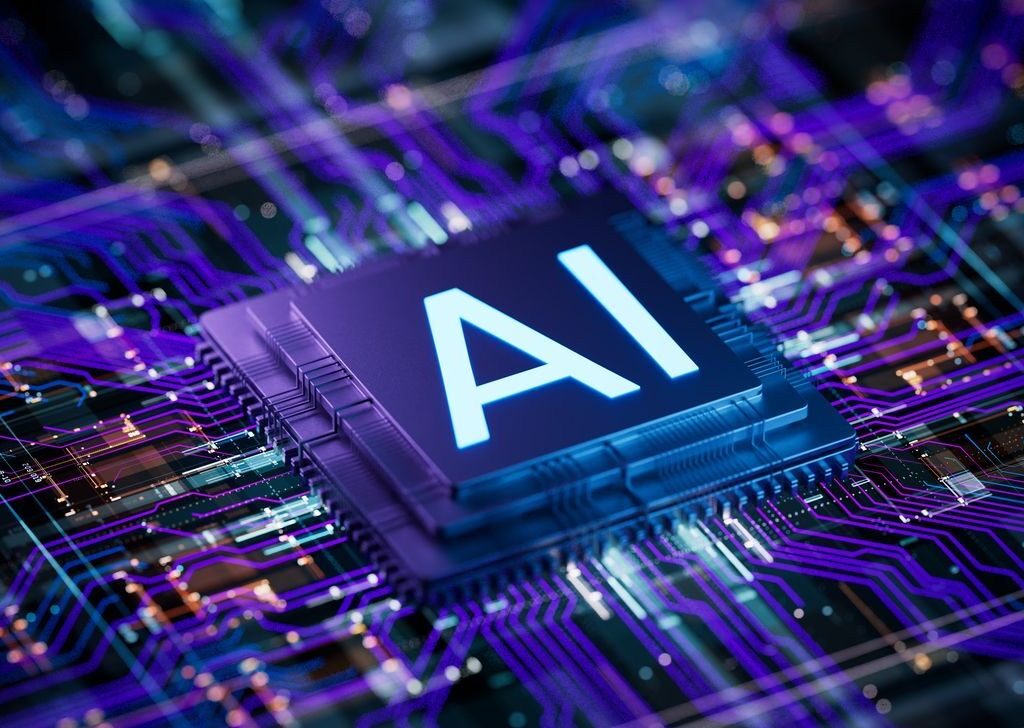In today’s fast-paced business environment, accurately predicting staffing needs has become a critical challenge for organizations across industries. AI demand forecasting represents a revolutionary approach to employee scheduling that leverages artificial intelligence and machine learning to analyze historical data, identify patterns, and predict future staffing requirements with unprecedented accuracy. By integrating predictive analytics into scheduling workflows, businesses can optimize workforce allocation, reduce labor costs, and improve both employee satisfaction and customer service. The emergence of AI-driven demand planning tools has transformed traditional scheduling methods into dynamic, responsive systems that adapt to changing conditions in real-time.
The integration of AI demand forecasting with employee scheduling platforms like Shyft represents a significant advancement in workforce management technology. Rather than relying on managers’ intuition or simplistic historical averages, these intelligent systems can account for numerous variables simultaneously—including seasonality, weather conditions, local events, economic indicators, and even social media trends—to generate highly accurate workforce demand models. As businesses face increasing pressure to optimize labor costs while maintaining service quality, AI demand prediction offers a competitive edge by ensuring the right number of employees are scheduled at precisely the right times.
Understanding AI Demand Forecasting for Workforce Scheduling
AI demand forecasting in the context of employee scheduling represents a sophisticated approach to predicting when and where staff will be needed most. Unlike traditional scheduling methods that rely heavily on manager experience or basic historical patterns, AI-powered systems utilize complex algorithms and machine learning models to process vast amounts of data and generate highly accurate workforce demand predictions. These advanced demand forecasting tools create a foundation for more efficient scheduling practices across various business operations.
- Pattern Recognition Excellence: AI systems detect subtle patterns in customer behavior and business operations that human schedulers might miss.
- Multi-variable Analysis: Modern forecasting algorithms consider dozens of variables simultaneously, from weather conditions to local events.
- Continuous Learning Capability: Unlike static scheduling templates, AI systems improve their accuracy over time through machine learning.
- Real-time Adaptability: AI demand forecasting can adjust predictions as conditions change, enabling dynamic schedule adjustments.
- Granular Time Increment Analysis: Advanced systems can forecast demand down to 15-minute intervals for precise scheduling.
The foundation of effective AI demand forecasting lies in its ability to process historical data alongside real-time inputs to create predictive models that continuously improve. When integrated with comprehensive employee scheduling solutions, these AI systems transform workforce planning from a reactive to a proactive process, allowing businesses to anticipate needs rather than respond to them after the fact.
How AI-Driven Demand Prediction Technology Works
The technical backbone of AI demand forecasting involves sophisticated algorithms that process data through multiple analytical layers. Modern artificial intelligence and machine learning systems employ various modeling techniques, from time series analysis to deep learning neural networks, to generate increasingly accurate predictions. Understanding the operational mechanics of these systems helps managers leverage their full potential for employee scheduling optimization.
- Data Collection Infrastructure: AI systems aggregate data from multiple sources including POS systems, CRM platforms, time clocks, and external data feeds.
- Preprocessing Algorithms: Raw data undergoes cleaning, normalization, and transformation to prepare it for analysis.
- Model Training Process: Machine learning models train on historical data, identifying correlations between variables and outcomes.
- Prediction Generation: Trained models process current and projected data to forecast future demand levels.
- Feedback Loop Mechanisms: Results are compared against actual outcomes to refine future predictions in a continuous improvement cycle.
The process is inherently dynamic, with AI systems constantly refining their predictive capabilities as new data becomes available. Advanced platforms like those discussed in AI scheduling: the future of business operations enable businesses to harness these technologies without requiring in-house data science expertise. The result is a scheduling system that not only responds to current needs but anticipates future requirements with remarkable precision.
Key Benefits of AI-Based Workforce Demand Models
Implementing AI demand forecasting for employee scheduling delivers substantial benefits that impact both operational efficiency and bottom-line results. Organizations that adopt these intelligent scheduling forecasts experience improvements across multiple business dimensions, creating competitive advantages in their respective industries. The workload forecasting capabilities of AI systems translate directly into measurable business outcomes.
- Labor Cost Optimization: AI prevents overstaffing and understaffing scenarios, reducing unnecessary labor expenses while maintaining service levels.
- Enhanced Employee Satisfaction: More predictable and equitable scheduling leads to improved work-life balance and reduced turnover.
- Improved Customer Experience: Proper staffing levels ensure customers receive timely service even during peak periods.
- Compliance Risk Reduction: AI systems can incorporate labor regulations into scheduling decisions, reducing legal exposure.
- Operational Agility: Organizations can respond more quickly to changing market conditions with data-driven staffing adjustments.
Companies implementing AI-driven scheduling solutions often report labor cost reductions of 5-15% while simultaneously improving service metrics. As explored in analytics for decision making, the insights generated by these systems extend beyond scheduling to inform broader business strategy, creating a multiplier effect on the initial investment in AI technology.
Essential Features of AI Demand Forecasting Tools
Not all AI demand forecasting solutions offer the same capabilities, and selecting the right platform requires careful evaluation of key features. The most effective AI demand planning software combines powerful analytical engines with user-friendly interfaces that make advanced forecasting accessible to scheduling managers. When evaluating options, businesses should consider how these features align with their specific employee scheduling requirements.
- Multi-factor Analysis Capability: Advanced tools consider numerous variables including historical patterns, seasonal trends, and external factors.
- Scenario Modeling Functions: The ability to run “what-if” analyses helps managers prepare for various possible demand situations.
- Integration Flexibility: Seamless connections with existing workforce management, POS, and other business systems ensure data fluidity.
- Visual Analytics Dashboard: Intuitive data visualization helps translate complex predictions into actionable scheduling insights.
- Automated Schedule Generation: The most advanced systems can automatically create optimal schedules based on forecasted demand.
Platforms like those described in AI scheduling assistant: the future of workforce optimization demonstrate how these features come together to create comprehensive workforce demand solutions. The right combination of features enables organizations to move beyond basic forecasting to truly optimized scheduling that balances business needs with employee preferences.
Implementing Predictive Analytics for Scheduling Success
Successfully implementing AI demand forecasting requires a strategic approach that goes beyond simply purchasing software. Organizations must prepare their data infrastructure, train their staff, and align processes to fully leverage predictive scheduling capabilities. A phased implementation approach typically yields the best results, allowing for progressive improvement in forecasting accuracy and scheduling efficiency.
- Data Readiness Assessment: Evaluate the quality, accessibility, and completeness of historical scheduling and demand data.
- Key Performance Indicator Definition: Establish clear metrics to measure the success of AI-driven scheduling improvements.
- Stakeholder Engagement Strategy: Involve both managers and employees in the transition to build support and gather insights.
- Phased Rollout Planning: Begin with limited scope implementations before expanding to enterprise-wide deployment.
- Continuous Improvement Framework: Establish processes for ongoing refinement of forecasting models and scheduling practices.
Implementation success also depends on selecting the right partners and solutions. Implementing time tracking systems that integrate with AI forecasting creates a complete ecosystem for workforce management. Organizations should develop a clear roadmap that addresses technical, process, and people aspects of the implementation to ensure comprehensive adoption.
Industry-Specific Applications of AI Demand Analysis
While the core principles of AI demand forecasting remain consistent, implementation details vary significantly across industries. Each sector faces unique scheduling challenges and demand patterns that require specialized approaches to AI-powered workforce planning. Understanding these industry-specific nuances helps organizations tailor their shift analytics workforce demand strategies for maximum effectiveness.
- Retail Sector Applications: AI forecasting in retail environments considers factors like promotional events, weather impacts, and seasonal shopping patterns.
- Healthcare Scheduling Solutions: Healthcare implementations must account for patient census fluctuations, procedure schedules, and specialized staff requirements.
- Hospitality Industry Forecasting: Hospitality businesses leverage AI to predict staffing needs based on occupancy rates, event bookings, and seasonal tourism trends.
- Manufacturing Workforce Planning: Production schedules, supply chain dynamics, and equipment maintenance requirements drive AI forecasting in manufacturing settings.
- Contact Center Demand Prediction: Call volume forecasting incorporates marketing campaigns, product launches, and historical contact patterns.
Each industry benefits from AI demand forecasting technologies tailored to its specific operational characteristics. The flexibility of modern AI systems allows for customization to address these varied requirements, providing relevant insights regardless of industry context. Organizations can learn from cross-industry best practices while implementing solutions designed for their particular business model.
Overcoming Challenges in AI Demand Planning
Despite its significant benefits, implementing AI demand forecasting for scheduling is not without challenges. Organizations often encounter technical, organizational, and cultural obstacles that must be addressed to realize the full potential of intelligent forecasting systems. Recognizing and proactively addressing these challenges is essential for successful adoption of real-time scheduling adjustments powered by AI.
- Data Quality Issues: Incomplete or inconsistent historical data can undermine forecast accuracy and require data cleansing strategies.
- Integration Complexities: Connecting AI systems with existing scheduling and workforce management platforms often presents technical hurdles.
- Change Management Requirements: Staff may resist data-driven scheduling that differs from traditional approaches, necessitating comprehensive change management.
- Algorithmic Transparency Concerns: Employees and managers may distrust “black box” AI recommendations without understanding the underlying logic.
- Ongoing Maintenance Needs: AI models require regular monitoring and refinement to maintain accuracy as business conditions evolve.
Organizations can overcome these challenges through strategic planning, stakeholder involvement, and selection of user-friendly AI solutions. As discussed in evaluating system performance, establishing clear success metrics helps maintain focus on business outcomes rather than technical implementation details. Successful organizations view AI demand forecasting as a journey of continuous improvement rather than a one-time implementation.
Measuring Success with AI Scheduling Predictions
To justify investment in AI demand forecasting technology, organizations must establish clear metrics that demonstrate business impact. Effective measurement goes beyond technical accuracy to assess how AI-driven scheduling influences key business outcomes. A comprehensive evaluation framework incorporates both operational metrics and financial indicators, providing a holistic view of the schedule optimization metrics that matter most.
- Forecast Accuracy Measurement: Track the deviation between predicted and actual demand to assess model performance.
- Labor Cost Impact Analysis: Quantify reductions in overtime, idle time, and overall labor expenses attributable to improved forecasting.
- Service Level Correlation: Monitor how accurately matching staff to demand affects customer satisfaction and service metrics.
- Employee Satisfaction Indicators: Assess how AI-driven scheduling influences turnover rates, absenteeism, and employee engagement.
- Schedule Stability Metrics: Measure reductions in last-minute schedule changes and shift modifications.
Organizations should establish baseline measurements before implementation to enable accurate before-and-after comparisons. The insights provided by advanced analytics and reporting tools can help identify specific areas where AI forecasting delivers the greatest value. Regular review of these metrics supports continuous improvement and helps justify ongoing investment in forecasting capabilities.
Future Trends in Intelligent Scheduling Forecasts
The field of AI demand forecasting for employee scheduling continues to evolve rapidly, with emerging technologies promising even greater accuracy and functionality. Understanding these future directions helps organizations make forward-looking decisions about their workforce management technology investments. Tomorrow’s reporting and analytics capabilities will extend far beyond today’s solutions, creating new opportunities for competitive advantage.
- Explainable AI Development: Next-generation forecasting tools will provide clearer explanations of predictions, building trust and enabling better human oversight.
- External Data Integration Expansion: More diverse data sources—from social media sentiment to IoT sensors—will enhance forecast accuracy.
- Employee Preference Optimization: Advanced algorithms will better balance business needs with employee scheduling preferences and well-being.
- Prescriptive Analytics Growth: Systems will move beyond predictions to recommend specific actions for optimizing schedules.
- Democratized AI Accessibility: User-friendly interfaces will make sophisticated forecasting capabilities available to organizations of all sizes.
Organizations should maintain awareness of these trends while developing their flexible scheduling options and technology roadmaps. The pace of innovation in AI forecasting suggests that capabilities will continue to improve, making it essential to select platforms with strong development trajectories and regular feature updates. Forward-thinking businesses are already exploring how these emerging capabilities can be integrated into their workforce management strategies.
Conclusion: Transforming Scheduling with AI Demand Forecasting
AI demand forecasting represents a paradigm shift in employee scheduling, moving from intuition-based workforce planning to data-driven decision making. By harnessing the power of predictive analytics, machine learning algorithms, and intelligent demand forecasting, organizations can simultaneously improve operational efficiency, enhance employee satisfaction, and deliver superior customer experiences. The competitive advantages offered by AI-driven scheduling will likely become increasingly important as labor markets tighten and customer expectations continue to rise.
For organizations considering implementation, the path forward involves careful assessment of current scheduling challenges, evaluation of available AI solutions, and development of a strategic implementation plan. While the technology continues to evolve, the core benefits of reduced labor costs, improved schedule accuracy, and enhanced workforce flexibility are already being realized by early adopters. By partnering with experienced providers like Shyft and leveraging proven implementation methodologies, organizations of all sizes can begin their journey toward AI-powered workforce scheduling optimization.
FAQ
1. What is AI demand forecasting for employee scheduling?
AI demand forecasting for employee scheduling is the application of artificial intelligence and machine learning algorithms to analyze historical data, identify patterns, and predict future staffing requirements. Unlike traditional forecasting methods, AI-driven systems can process numerous variables simultaneously—including seasonality, weather, local events, and business trends—to generate highly accurate workforce demand predictions. These predictions enable businesses to create optimized schedules that match staffing levels to expected demand, reducing both overstaffing and understaffing scenarios.
2. How does machine learning improve workforce demand predictions?
Machine learning improves workforce demand predictions through its ability to identify complex patterns and relationships that human analysts might miss. These systems continuously learn from new data, automatically refining their predictive models to improve accuracy over time. Machine learning algorithms can detect subtle correlations between seemingly unrelated factors (like weather patterns and customer traffic) and adapt to changing business conditions without manual reprogramming. This self-improving capability means forecasting accuracy typically increases the longer the system is in use, creating a virtuous cycle of improving scheduling efficiency.
3. What data is needed for effective AI scheduling forecasts?
Effective AI scheduling forecasts require several types of data, including historical sales or service transaction records, past schedules and labor hours, customer traffic patterns, and timestamps of peak activity periods. The system benefits from additional data like promotional events, marketing campaigns, local events calendars, weather records, and seasonal indicators. Employee data including skills, certifications, availability, and performance metrics enhances the system’s ability to not just predict demand but also match the right employees to forecasted needs. While more data generally improves accuracy, even organizations with limited historical data can benefit from AI forecasting by starting with available information and expanding data collection over time.
4. What ROI can businesses expect from implementing AI demand planning software?
Businesses implementing AI demand planning software typically see ROI in multiple areas, with labor cost savings of 5-15% being the most immediately quantifiable benefit. Additional financial returns come from reduced overtime expenses, decreased turnover-related costs, and improved productivity. Many organizations report service quality improvements that contribute to increased customer satisfaction and revenue growth. The timeframe for ROI realization varies by implementation complexity, but most businesses begin seeing measurable results within 3-6 months. The compounding effect of continuously improving forecast accuracy means ROI often increases over time as the AI system learns and adapts to the specific business environment.
5. How does AI demand forecasting integrate with existing scheduling systems?
AI demand forecasting solutions typically offer several integration options with existing scheduling systems, ranging from full API-based integrations to simpler data exchange mechanisms. Most modern workforce management platforms provide standard integration capabilities that allow AI forecasting tools to import historical data and export predictive insights. Some organizations opt for a phased approach, initially using AI forecasts as advisory inputs for human schedulers before moving to more automated integration. The level of technical complexity depends on the specific systems involved, but middleware solutions and standard data formats have made integration increasingly straightforward, even for organizations with legacy scheduling systems.












